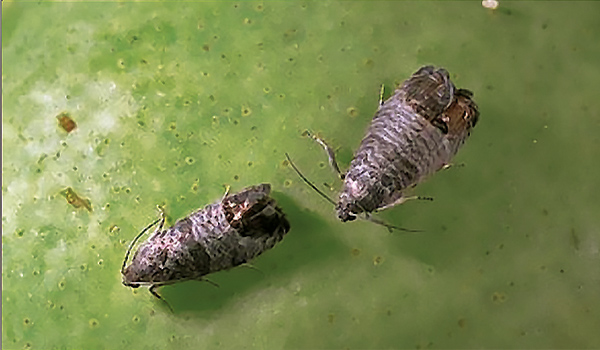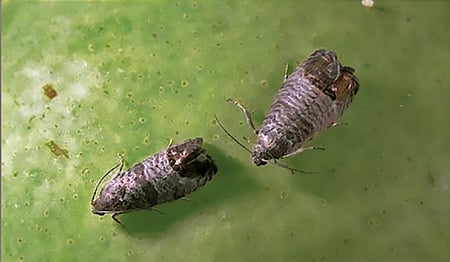


Degree-days are an incredibly helpful tool for monitoring pests and subsequently timing sprays and other pest management techniques. Learn more about how degree-days can help you from Sara Goldman, Suterra Technical Support Manager.

Degree-days can help estimate when certain life stages and flights are predicted to occur. These estimates should always be confirmed by boots-on-the-ground monitoring data.
Invertebrate animals, including insect pests, require a certain amount of heat to develop from one stage to another in their life cycle (for example, from egg to larva). The amount of time required to complete a given organism's development can also vary based on its food source (crop) and the quality of that food source (e.g., mummy nuts vs. new crop nuts) as well as the local minimum and maximum temperatures.
This heat accumulation process is often approximated in units called degree-days (°D or DD). Degree-days are calculated based on the upper and lower temperature thresholds of a specific insect. The thresholds signify that no growth or development will occur when the temperature is above the upper threshold or below the lower threshold, so no degree-days will accumulate during those times.
Each species requires a certain number of degree-days to complete its development. Each developmental stage of an insect has its own total DD accumulation requirements. The date to begin accumulating degree-days, known as the biofix date, varies with each species and can also vary by year or location. Biofix dates are usually based on specific biological events, such as the first trap catch or first occurrence of a pest. The accumulated degree-days from a biofix date can help predict when a specific developmental stage will be reached.
Many common insect pests have easily available models to perform the DD calculations so it is not necessary to memorize calculations or the upper or lower thresholds. Commonly used models in California agriculture can be accessed on the UC IPM website. The user chooses the insect species and enters the biofix (start) date. The user must also choose a weather station as close to the desired location as possible. Those 3 steps are all that are needed to calculate the DD using the UC IPM calculator. For insect pests that have multiple host crops, pick the crop from the drop-down menu in the first step.
For more accurate, site-specific calculations, use weather data collected from in-field data loggers. There are several commercially available equipment choices for gathering in-orchard weather data. Using your own weather data requires the additional step of entering that data into the UC IPM degree-day calculator. For instructions on how to collect and format your own weather data, see the ‘Data From Your File’ subsection on this page.
The first step in using DD is to pick the start, or biofix, date. Setting the codling moth biofix takes two steps. Biofix occurs when moths are consistently caught on at least 2 consecutive trap checks AND sunset temperatures are consistently 62°F. This is often called the Male Biofix and can be determined using a Delta trap with a 1X CM pheromone lure. There is no need to be able to identify the difference between male and female CM, as a 1X pheromone lure will only catch males. In orchards where mating disruption inputs have been placed ahead of biofix, lures known as combo lures capture both males and females, and can be used to establish biofix.
As several crops act as a host for codling moth, the UC IPM DD calculator will allow the user to pick from apples, pears, plums, prunes, walnuts, or landscape plantings in a drop-down menu. A list of host crops will appear automatically in such situations.
Once you have chosen a pest, biofix date, and weather station, select ‘Calculate’ to see your finished report. In addition to the degree-days accumulated each day and cumulative degree days from biofix, the report includes insecticide spray timing information and average accumulated DD required for each generation. For example, a DD report for CM in apples will include the following information on average DD development time for each generation:
|
Generation Length (DD) |
||
|
1st gen |
2nd gen |
3rd gen |
|
1060 |
1100 |
1200 |
For step-by-step instructions on how to calculate degree-days with or without a model as well as lots of tips on how to best use your DD report, please see the following two videos from UC IPM.
If you have any questions about monitoring, mating disruption, or integrated pest management, the team of specialists at Suterra are happy to help. Contact your local representative or email us online using this form.
Information provided herein does not constitute a recommendation. Always consult with your PCA to determine the best pest management practices and timings for your operation. Adhere to state and local regulations and the current pesticide label and check with your organic certifier.